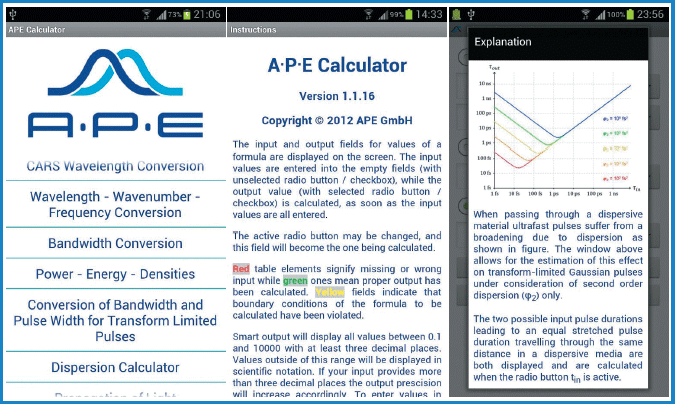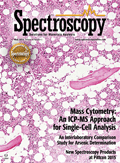APE Optics Calculator
The APE Optics Calculator app is designed to help users evaluate nonlinear equations, including sum frequency generation, difference frequency generation, the wavelength relations in an optical parametric oscillator, and in coherent anti-Stokes Raman scattering (CARS) spectroscopy.
IS THERE AN APP FOR THAT?
HIGHLIGHTS OF APPS FOR SPECTROSCOPY
APP NAME: APE Optics Calculator
OFFERED BY: Stefan Popien
PLATFORMS: Android (requires 1.6 and up); iPhone, iPad, and iPod (requires iOS 6.1 or later; optimized for iPhone 5)
WHAT IT DOES: The APE Optics Calculator app is designed to help users evaluate nonlinear equations, including sum frequency generation, difference frequency generation, the wavelength relations in an optical parametric oscillator, and in coherent anti-Stokes Raman scattering (CARS) spectroscopy. Reportedly, the conversion between wavelength, wavenumber, and frequency as well as different characterizations of pulses can be calculated.
COST: Free


Best of the Week: AI and IoT for Pollution Monitoring, High Speed Laser MS
April 25th 2025Top articles published this week include a preview of our upcoming content series for National Space Day, a news story about air quality monitoring, and an announcement from Metrohm about their new Midwest office.
LIBS Illuminates the Hidden Health Risks of Indoor Welding and Soldering
April 23rd 2025A new dual-spectroscopy approach reveals real-time pollution threats in indoor workspaces. Chinese researchers have pioneered the use of laser-induced breakdown spectroscopy (LIBS) and aerosol mass spectrometry to uncover and monitor harmful heavy metal and dust emissions from soldering and welding in real-time. These complementary tools offer a fast, accurate means to evaluate air quality threats in industrial and indoor environments—where people spend most of their time.